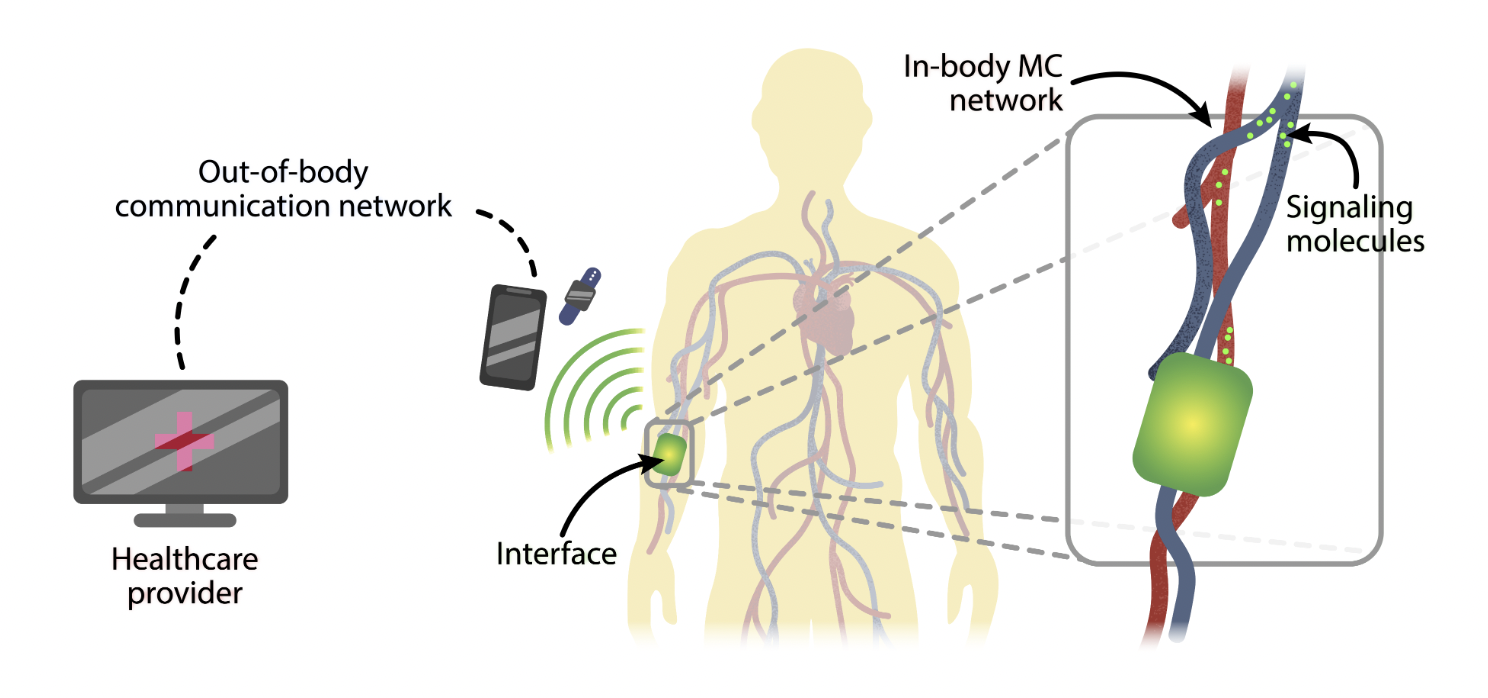Research Project/Major Project/Master Thesis — Optimizing the Placement of IoBNT THz Interface Devices in the Cardiovascular System under Sensing and Tissue-Fading Constraints
Topic:
The Internet of Bio-Nano Things (IoBNT) extends the Internet of Things into the human body, connecting in-body molecular communication (MC) networks with out-of-body electromagnetic (EM) systems. To realize this vision, and enable novel medical applications like continuous in-body health monitoring, interface devices are needed that can
- sense molecular biomarkers within the body, and
- communicate wirelessly with external systems.
However, the optimal placement of such interfaces inside the body, particularly in the cardiovascular system, is not yet understood. Placement critically affects both biomarker sensing performance and THz communication reliability.
This project investigates where to position THz-based IoBNT interfaces in or near blood vessels to balance:
Physiological sensing constraints:
- C1: Sensitivity — vessels with high blood flux deliver more biomarkers.
- C2: Sampling rate — slower flow improves temporal sampling.
THz communication constraints:
- C3: THz generation — nano-devices are energy-limited; passive reflection/modulation interfaces are more feasible.
- C4: Tissue fading — biological tissue strongly attenuates THz waves; feasible range is a few millimeters.
- C5: Dynamic environment — motion and varying tissue properties create time-varying THz channels.
To address these, the project integrates:
- Existing hemodynamic models (blood flow and biomarker transport) which were previously developed at IDC
- Existing models for THz tissue-fading (absorption, scattering, and spreading losses)
- Simulation tools (e.g., COMSOL) and self-healing THz beams (Bessel beams) for improved link reliability.
Guidelines for the project:
The overall objective is to derive scientifically grounded recommendations for the ideal placement of IoBNT THz interfaces in the human body, especially within the cardiovascular system.
This may include:
- Conceptualizing a bi-directional, THz-based passive IoBNT interface device
- Identifying promising vessel sites based on biomarker dynamics (based on C1 and C2)
- Developing an enhanced tissue-fading model incorporating self-healing beams
- Validating models through simulation and link-budget analysis (WP4–WP5)
- Integrating physiological and communication constraints to propose optimal interface locations (WP6)
Note that not all of the above bullet points must be completed; rather, you are encouraged to explore those aspects that best match your background and strengths!
Prerequisites:
- Basic programming skills
- Affinity for mathematical modeling
The complete project description can be found here. In case you are interested in pursuing this thesis/research project, please contact Lukas Brand (lukas.brand@fau.de) or Timo Jakumeit (timo.jakumeit@fau.de).
